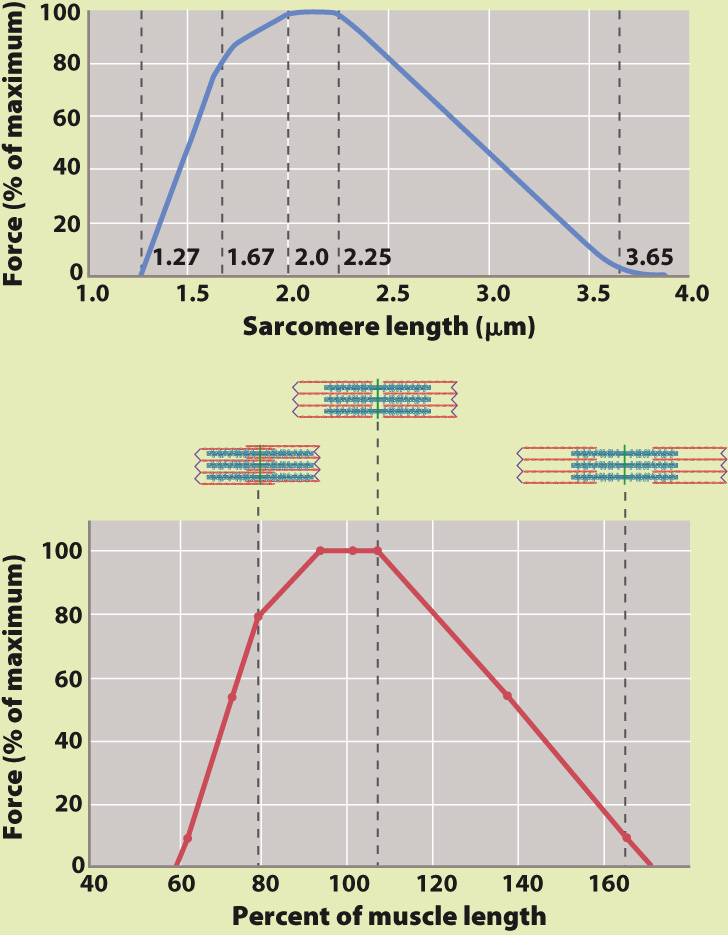HOW DO WE KNOW?
FIG. 37.9
How does filament overlap affect force generation in muscles?
BACKGROUND From the 1930s through the 1960s, British muscle physiologists studied the properties of striated frog muscle fibers. In the first set of experiments, A. V. Hill examined how a muscle’s shortening velocity affects its force production. In the second set of studies, American physiologists Albert Gordon and Fred Julian, together with British physiologist Andrew Huxley, studied how a muscle’s length when it contracts affects the muscle’s force-
HYPOTHESIS Gordon, Huxley, and Julian hypothesized that changes in overlap between myosin and actin affect the number of cross-
EXPERIMENT The three scientists isolated a single muscle fiber and used optical microscopy to measure sarcomere length. They kept this length constant while the fiber was stimulated to produce force. Measurements of force were then obtained at different sarcomere lengths. The length at which the muscle fiber generated maximum force is indicated on the graphs as 100%. Other lengths are expressed relative to this length.
RESULTS The top graph shows the data obtained by Gordon, Huxley, and Julian, and the bottom graph reinterprets their data in terms of force and percent of muscle length. Their experiments showed that the muscle fiber produced maximal force at an intermediate sarcomere length (approximately 2.3 µm). At this length, the greatest number of cross-

FOLLOW-
SOURCE Gordon, A. M., A. F. Huxley, and F. J. Julian. 1966. “The Variation in Isometric Tension with Sarcomere Length in Vertebrate Muscle Fibres.” Journal of Physiology 184:170–